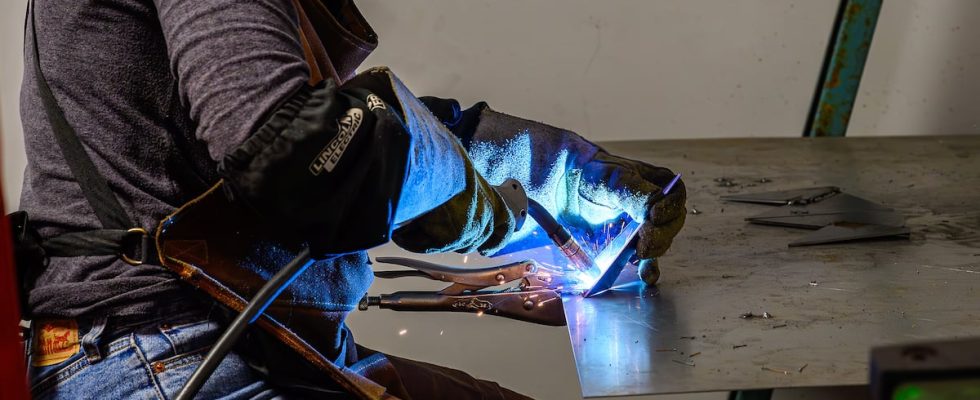Being able to repair a damaged table, make half-wood, half-metal shelves, reinforce the structure of a terrace… Metal welding is like a superpower that allows us to undertake countless projects for our home and our family.
But with its sparks, its heat, its technique, this superpower seems to ask to be a superhero. Scared to get into it? Here are the fundamental principles to know to dare to get started!
1. Which protection to use?
Before talking about equipment and machines, we are talking about an area where you have to protect yourself. Looking at the light of a welding in progress without a helmet can permanently damage your eyesight. The reassuring side is that once equipped, you do not risk much.
So plan:
- Full face welding helmet
- welding apron
- Long clothes in natural material (no t-shirt!)
- welding gloves
- Closed shoes
2. What type of welding to do and what machine to use?
There are many welding techniques (TIG, MIG, arc…). For a beginner, MIG welding is both the most accessible and the one that allows you to do the most different projects.
Count between $200 and $1,000 for a new MIG welder, depending on its power and its lifespan.
3. What accessories to plan?
In addition to the machine, you will need some accessories. At the very least, a bottle of gas (argon or helium), which you will find from specialists such as Air Liquide.
Then, we recommend a welding table, some clamps, and over time, a small drill press.
Welding is an unsuspected way to unleash your creativity.
Courtesy
4. Where to buy the materials?
It’s not that easy to find metal! Some parts can be bought at Home Depot or BMR, but you will often need to go to specialized places. The good news is that almost all welding shops will sell you metal (plates, tubes, etc.) by the linear foot.
And the metal has the chance to be reused almost endlessly. So you can start from old furniture that you will reinvent!
5. How to learn to weld?
You can test on your own on metal scraps, but we strongly recommend taking a course to learn the fundamentals of metal technique and physics (distortion for example).
After giving hundreds of welding workshops to Les Affûtés, we guarantee that everyone is surprised to see how the metal behaves during a first workshop!
6. Where can I find help?
One of the benefits of soldering is its community. There are thousands of enthusiast videos online, and lively forums to help you progress with this new superpower—.
Good sparks!
